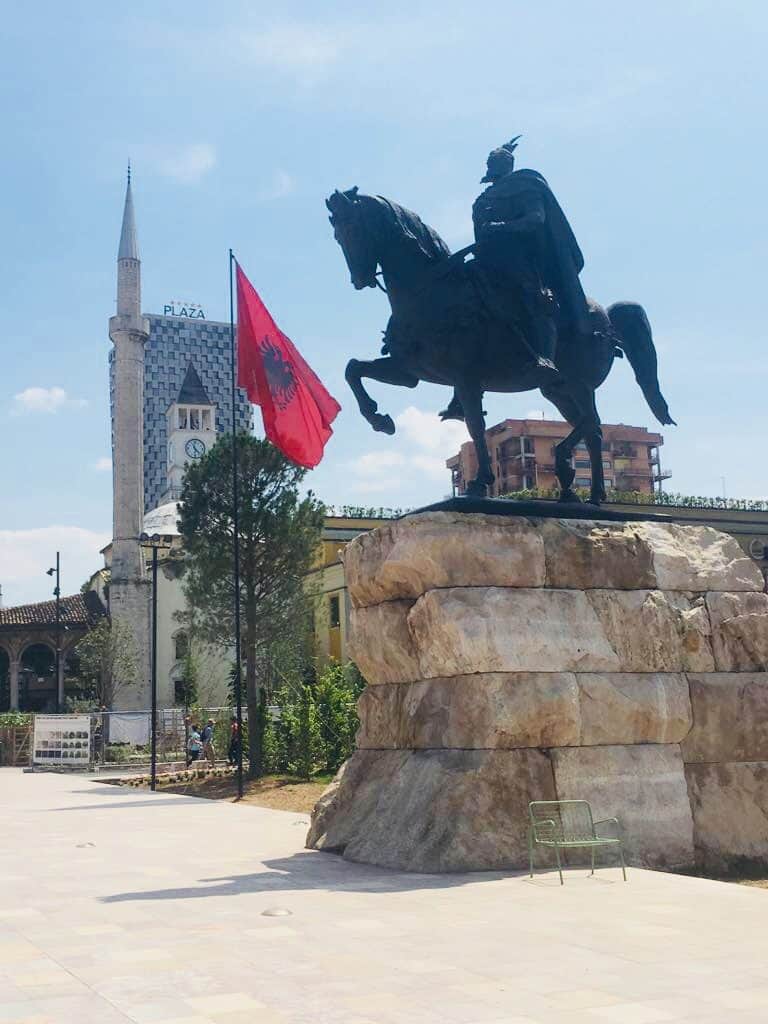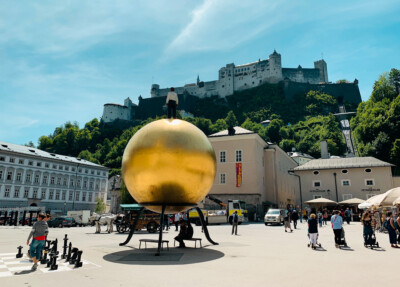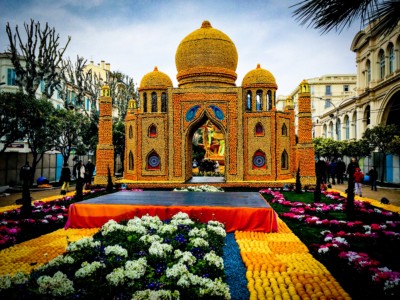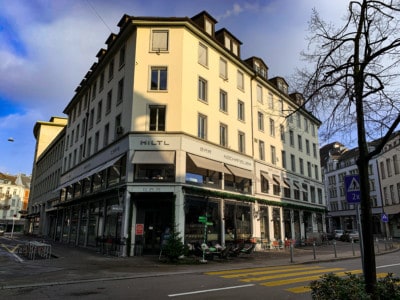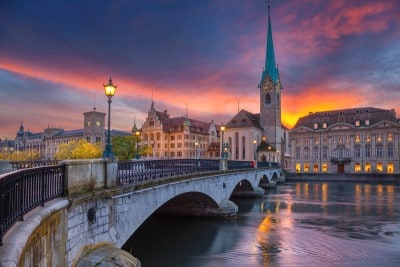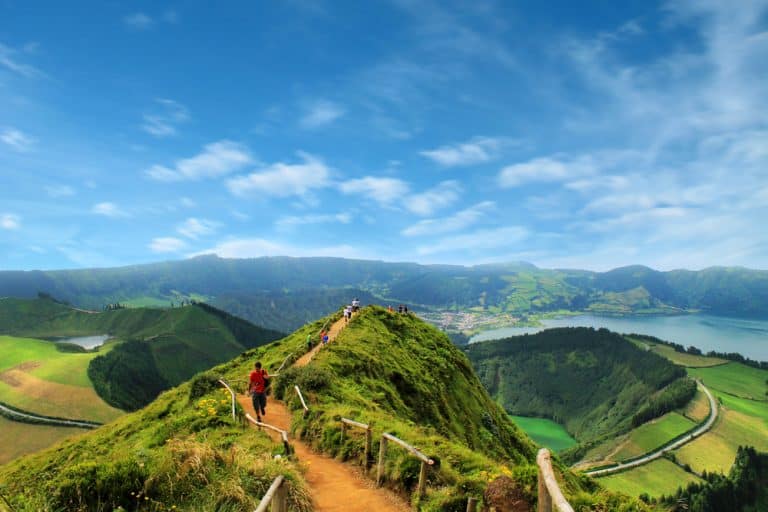2 days in Oslo: the top things to put on your itinerary

Norway’s capital city has a wealth of attractions to suit visitors no matter what their interests are.
Overlooking the Oslo fjord, this attractive Scandinavian city is great for those who love the outdoors, yet also caters for travellers looking for some culture and entertainment.
If you’re planning to spend 2 days in Norway’s largest city, you’ll find the centre is very walkable and offers quite a variety of attractions.
As you explore it, you’ll find many historic buildings standing alongside iconic modern structures. There’s also a royal residence, a medieval castle, beautiful parks, over 50 museums, and a local fijord.
And with the Norwegian krone (NOK) now being historically weak against the euro, pound, dollar, and other currencies, Oslo is currently a more affordable city break destination. So now is the time to go!
Read on for the top things to do and best places to visit over 2 days in Oslo.
2 days in Olso: top things to do
– Stroll along Oslo’s central avenue Karl Johans Gate all the way up to the Royal Palace
– Wander along nearly 10km of a pedestrian walkway that makes up the Harbour Promenade
– Admire the fantastic views of Oslo’s harbour, with its impressive architecture, fabulous eateries, and relaxing green spaces
– Marvel at the eye-catching Opera House on the waterfront
– See Edvard Munch’s famous The Scream at the new National Museum alongside major works by other Norwegian and international artists
– Head to the new Munch Museum next to the Opera House to see different versions of The Scream
– Visit the Nobel Peace Center and admire the stunning City Hall a short distance away
– Grab something to eat on the waterfront in the Aker Brygge district
– Visit the magnificent Akershus Castle, a massive fortification on the waterfront
– Take a leisurely walk in the spacious Frognerparken and admire Gustav Vigeland’s incredible sculptures in the Vigeland Sculpture Park
– If you have a good head for heights, hop on the metro and visit Oslo’s famous ski jump in Holmenkollen, with spectacular city views from the jump tower
– Go skiing in winter or take a fjord cruise to some islands in the summer
This post contains affiliate links
About Oslo
Oslo is the capital of Norway, one of three countries, together with Denmark and Sweden, which commonly make up Scandinavia.
With a population of around 700,000 inhabitants, it is located in the south of the country. It sits on the Oslofjord, a large waterway that ultimately connects to the North Sea.
Oslo is not only Norway’s financial hub but also its seat of government and where the Norwegian royal family resides.
How to get to Oslo
There are two main airports in Oslo. The best one to arrive at is Gardermoen Airport. This is the nearest one to the city centre and is just over 50km away.
For travel from Gardermoen airport to the city centre, it’s worth looking at travel options in advance. The Visit Oslo site offers links to the different modes of transport, and ticket options.
Oslo also has a second airport: Torp Sandefjord Airport.
However, this is over 100km from the city centre, and consequently you will need to factor in the longer journey time. You can get more information on modes of transport and ticket options here.
If you only have 2 days in Oslo, try to arrive Gardermoen airport.
By train from Gardermoen airport
One option is to take the FlyToget express train. This usually leaves every ten minutes and delivers you to Oslo central station (Oslo Sentralbanestasjon) in around 20 minutes.
Once you arrive at the central station, you can transfer to the underground, bus, and tram services and travel on to your accommodation. Be mindful, though, this train can be a more expensive option.
A cheaper alternative is to use trains operated by Norway’s national railway company Vy. This is a slightly slower route but is half the price.
By bus from Gardermoen airport
If you prefer to take the bus, the best option is the service provided by Flybussen Express Bus. Typically, travel time is around an hour, depending on traffic.
By private transfer
Another option is to get a private transfer from the airport. The journey time is usually about three-quarters of an hour, again dependent on traffic. The advantage here is that they will drop you right at the door of your accommodation.
How to get around Oslo
It’s really easy to get around the main sights in Oslo.
On foot
If you are spending two days in Oslo, you will find you can walk much of the city centre on foot.
It’s worth picking up a map in advance so you can identify the main sights you want to see and where they are located. This will make it easier to plan out your time in the city.
Walking tours
If you are particularly interested in a walking tour, booking a guided tour is always possible.
These cover many interests, such as street food culture, landmarks and history, and even Christmas traditions.
By public transportation
You can buy tickets that enable you to travel on the metro, trams, buses, ferries, and trains. You can buy a single travel ticket for one zone for one hour, or alternatively purchase a 24-hour ticket for one zone.
It is worth noting that all the main sights, including all of the terminals on the underground, fall into Oslo Zone 1.
You can purchase a ticket from several outlets – at Mix, Narvesen, Deli de Luca, 7-Eleven, the Oslo Visitor Centre, and at train stations.
The hop-on hop-off bus
You can also purchase a ticket for the Oslo hop-on hop-off sightseeing bus. There are tickets for either 24 or 48 hours.
You also get an audio guide while on board, which provides information as you travel around. There are also discounts to city museums.
As this service covers all the prominent landmarks, it may suit some visitors better than other options, especially if you have limited time in the city. It’s particularly handy, for example, to get out to the popular Vigeland Sculpture Park, which is a little way out of the centre.
The Oslo Pass
Alternatively, you may want to buy the Oslo Pass.
This gives you free admission to over 30 museums and sights, and unlimited travel with the public transport system throughout Oslo and in the immediate surroundings. It includes trams, buses, ferries, and the subway.
There are also discounts on other things, including restaurants, shops, and concerts.
Things to do in 2 days in Oslo
Although there is a lot to do in Oslo, you can see all the main sights in two days. Below I’ve listed some of the top sights for your Oslo itinerary.
Depending on how you choose to get around – i.e. walking, using public transport, or the hop-on hop-off bus – you might want to start by focusing on the sights dotted around the central area and Harbour Promenade.
That leaves you the second day to go a little further out from the centre.
I’ve given you below an itinerary for 2 days in Oslo with the main sights included. The itinerary for the first day is just one suggestion of the order you can take to see the sights.
Also download this map which will help you see how things are located in relation to each other.
2 days in Oslo: Day 1
Explore central Oslo
On the morning of the first day of your 2 days in Oslo, I would recommend exploring the central part of Oslo and seeing all the sights based here.
You don’t need to go inside them all (and in fact, there are some where you can’t do this) – but it’s worth seeing them all from the outside.
You can start at the central train station and head west along the city’s main artery Karl Johans Gate. This will take you in the direction of the Royal Palace.
Along the way, you’ll pass Oslo Cathedral (Domkirke) and the Norwegian Parliament building (Stortinget).
Oslo Cathedral

Although it is not large in comparison to many cathedrals found in other capital cities, Oslo’s is the most important religious building in the Church of Norway Diocese. Consequently, members of the government and the Royal Family hold weddings and funerals here.
It is free to go into the cathedral, but you need to book in advance if you fancy a guided tour.
Norway’s Parliament Building

Known as the Stortinget, it is impossible to miss this uniquely designed building bathed in yellow sandstone, which was first used as Norway’s parliament in the late 1860s.
Flanked by two wings, Norway’s parliamentarians sit in the rotunda at the centre. From the windows at its front, you can apparently see down to the Royal Palace.
Although it is not possible to take a guided tour of the government building at the moment, you can join a digital guided tour if this interests you.
While at this spot, look out for the atmospheric Grand Café. This serves breakfast, lunch, and dinner and was regularly visited by Norwegian playwright Henrik Ibsen, among many others.
If you are standing in front of the Stortinget, the café is on the right side of Karl Johans Gate.
The National Theatre
When you stand in front of the parliament, you’ll see you have entered a parklike piazza that runs parallel to the city’s main thoroughfare.
This takes you further west to the National Theatre, Norway’s main venue for stage and theatre productions. The theatre has a close link with Henrik Ibsen whose statue stands outside. Every year, it hosts the biennial International Ibsen Festival.
Slottsparken and the Royal Palace
After seeing the National Theatre, you can walk uphill into a spacious park and garden called Slottsparken. At the centre of this is the early 19th century Royal Palace (Det kongelige slott).

The palace is only open to the public via guided tours, which take place from late June through to the middle of August. When you visit, you’ll see some of the most significant rooms here, including those used for royal functions.
One of the highlights is the King Haakon VII Suite, a sumptuous guest room.
Although the inside is restricted to summer guided tours, remarkably, you can walk right up to the Norwegian royal family’s main residence from the outside.
And when you visit the Slottsparken, you can walk through the entire 54 acre grounds. I would definitely recommend you spend some time exploring the park.
The Ibsen Museum and Teater
If you are a fan of Henrik Ibsen, there is a great museum dedicated to him just across from the southern side of Slottsparken: the Ibsen Museum and Teater. This is where Ibsen spent the final years of his life, and you can see lots of fascinating exhibits about the playwright.
The waterfront area
After seeing the main city centre sights, I suggest going over to the city’s waterfront area. There is a lot to see here and many unique and amazing buildings.
Even if you don’t like the architecture of some of these, you can’t disagree that they’re unique!
Oslo’s government has pumped a huge amount of money into energising the waterfront, and it shows. The pedestrianised Harbour Promenade, which runs from the Frognerkilen district from the west to Sorenga in the east, enables locals and visitors to walk for miles.
Along the way, there is a lot to see, particularly in Oslo’s central harbour area.
To get to the waterfront area, wander back to the National Theatre. From here, it is only a short walk down to Oslo’s impressive twin-towered City Hall (Radhuset) on Radhusplassen (City Hall Square) and the Nobel Peace Center (Nobels Fredssenter).
It’s also a stone’s throw from the waterfront, where the ferry takes you over to the Bygdøy peninsula (and some of the city’s top museums) and where cruise ships come in to dock.
Oslo City Hall
With a fountain in front, the modernist red brick City Hall is perhaps not to everyone’s tastes, but the murals inside are worth seeing. The carillon is the biggest one across all Nordic countries; the bells chime every hour.

It is open to visitors every day from 9 am to 4 pm, although there are some days when it is closed.
The Nobel Peace Center
You should definitely pop into the Nobel Peace Center while you are around Radhusplassen (City Hall Square). The exhibition inside is excellent.
The Nobel Peace Prize is given out every December, and when you visit the centre you’ll learn about the prestigious global award’s history, about its Swedish founder Alfred Nobel, and also the winners over the years, some of whom were quite controversial!
It is apparently not entirely clear why a Swede should stipulate in his will that the Nobel prizes for all the categories should be awarded in Stockholm except for the peace prize, which is handed out in Oslo.
One of the explanations put forward is that Norway didn’t have the militaristic traditions of its more ambitious and populous neighbour, hence why it might make a more suitable awardee of this prize.
The National Museum of Art, Architecture and Design
The main artistic draw around the Radhusplassen area is the new National Museum. This houses the country’s largest collections of art, design and architecture. If you want to see Edvard Munch’s famous painting The Scream, this is where you need to come, although there are more versions at the Munch Museum.
The museum has cafes and restaurants if you want some refreshments during your visit. There is also a bar on the roof terrace where you can look out over Oslo’s skyline and the fjord.
Aker Brygge – a perfect lunch or dinner spot
A good place to stop and have something to eat is Aker Brygge. Known for its strip of top-notch bars and restaurants along the boardwalk, this waterfront address has great views over the harbour. It is less than a ten-minute walk from the City Hall and its massive square.
Depending on the time and how hungry you are, you could head here directly when you arrive at the waterfront and have lunch first before spending the afternoon taking in the sights listed above and/or below. Alternatively, you can come back here in the evening for dinner.
Akershus Fortress
Once you’ve explored the sights around Aker Brygge and Radhussplassen, there are many things to see and do if you head eastwards along the promenade. You can’t miss the huge Akershus Fortress (or Akershus Castle/Slott), another must-visit attraction.

The castle dates from medieval times, but the massive complex underwent significant changes in the 17th century to convert it from a fortress to a castle. Apparently, the Norwegian government uses the halls for state events.
As well as the castle, you can also visit the chapel, Royal Mausoleum and two museums. The castle grounds are also highly recommended.
Oslo Opera House
Carry on walking east away from the castle, and you will soon come across another notable landmark, the Opera House, This is home to the Norwegian National Opera and Ballet. It sits in a glimmering glass building standing in the harbour.
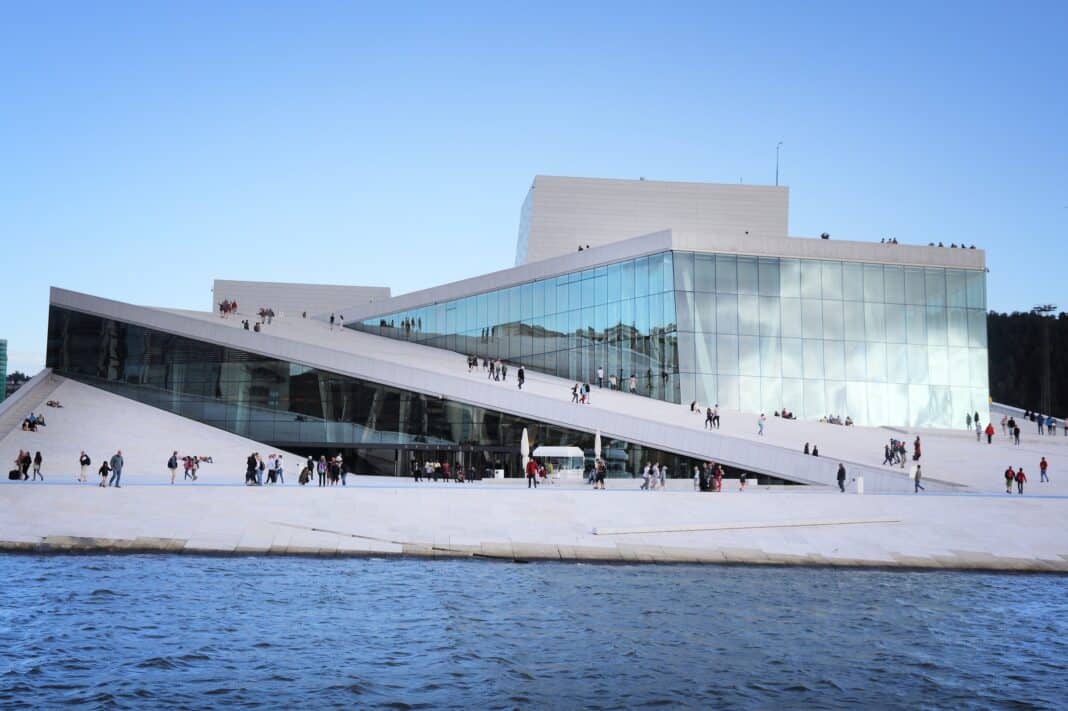
It’s a really unique building. There can’t be many buildings where you can walk on the roof! If you do this, you’ll get fabulous views across the city.
And if you fancy finding out what happens behind the scenes in the Opera House, you can book a guided tour which takes place daily.
The Munch Museum
Near to the eye-catching structure that is the Opera House is the Munch Museum. This is housed in another uniquely designed building.

Opened in October 2021, this museum contains the most extensive collection of Munch’s art anywhere. You can see three versions of his famous painting The Scream – a painting, a drawing and a print – and you can also admire a vast collection of his other works. These are presented as themed exhibitions such as ‘Monumental’, ‘Shadows’, ‘Up Close’ and ‘Infinite’.
The Viking Museums
Most visitors to Norway (and also Denmark and Sweden) will be familiar with the country’s Viking past, so it’s perhaps not a surprise that Oslo has some superb museums dedicated to this fascinating period in Norwegian history. Near Roald Amundsens Gate, you’ll come across the excellent Viking Planet Museum.
Its website describes this as the country’s first digital Viking museum. If you visit, you can experience what everyday life was like for the Vikings through VR technology, holograms, interactive screens, and 270-degree film.
Usually, there are two other Viking museums worth visiting which require you to get the ferry to the Bygdøy peninsula. Unfortunately one of them, the Viking Ship Museum, is temporarily closed until 2026/27.
However, there is the Norwegian Maritime Museum (Norsk Maritmt Museum) that you can visit on the second day of your 2 days in Oslo (see below). The Historical Museum (Histrorisk Museum) near the Royal Palace also exhibits some fascinating artefacts from the Viking Age.
2 days in Oslo: Day 2
Having explored many of the top attractions in central Oslo and the waterfront on the first day, there are still many things you can pack into your second day. However, this will require you to venture a little further out from the centre.
You could, for example, stroll through a very unique park with incredible sculptures inside. Or you could visit another museum, perhaps one that celebrates Norway’s Viking heritage or its achievements in polar expeditions.
Then again, you could also take a cruise on the Oslofjord or brave a simulated ski run.
Below, I’ve outlined a few suggestions you might want to consider while you are here.
Go to a unique park
If you visit one park in Oslo, it really needs to be Frogner Park (Frognerparken). This is the largest park in the city centre area and can be reached from the centre using tram number 12. The journey time takes about 20-25 minutes.
In fact, this tram number is highly recommended for sightseeing in general as it stops at or near many of the main Oslo sights, including Aker Brygge, the City Hall and Akershus Castle. The tram stops just outside the entrance gates to the park. You can also catch a metro from the central station.
This sprawling green space is popular with locals and contains Norway’s largest collection of roses. There is also a café and restaurant. If you are visiting and have time, you can stop off and see Frogner Manor House and/or the Museum of Oslo.
Vigeland Sculpture Park
However, the headline attraction is the amazing Vigeland Sculpture Park.
The brainchild of sculptor Gustav Vigeland, the elegantly designed park, which features a fountain and bridge, contains more than 200 pieces of his work. Sculptured in bronze, granite, and wrought iron, the figures are said to represent every emotion of human life.




Pointing to the sky at the highest point in Vigeland Park is the Monolith. This is an incredible sculpture carved from a single stone block and depicting 121 human figures.
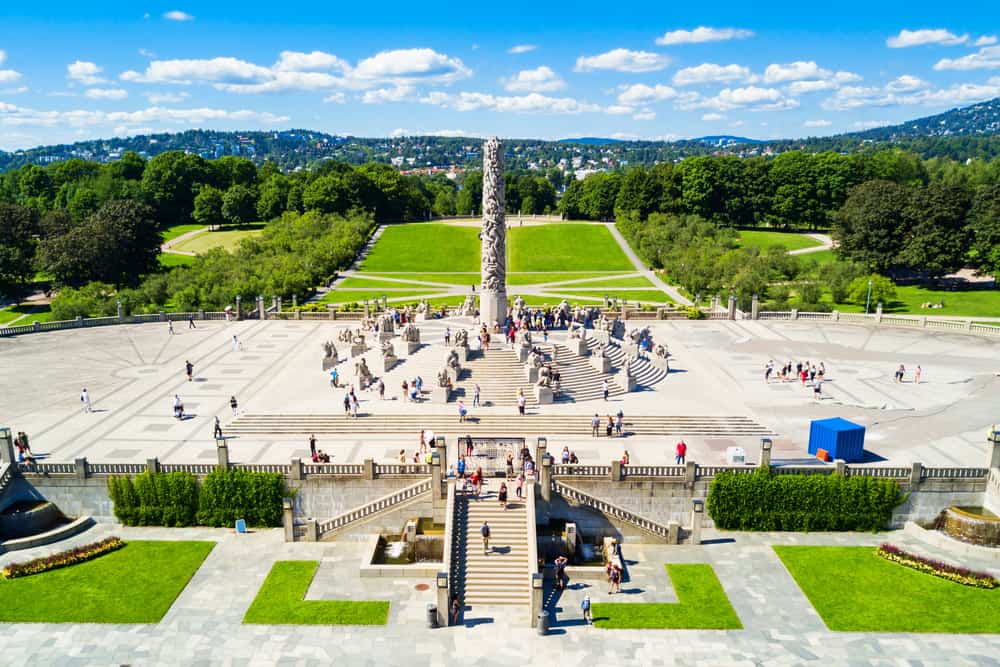
This is where the work involved in the sculpting was really brought home to me. Every single inch of this obelisk is carved with interlocking bodies that climb upwards towards the summit, which is decorated with writhing babies.
The detail is breathtaking and best viewed while standing alongside the giant figures flanking the base.
I’d definitely recommend a trip here – the journey out from the main centre was so worth it.
While you are here, it’s also worth spending some time visiting the Vigeland Museum nearby. This is where the sculptor lived and produced his work. Inside you’ll find an almost entire collection of his work on display.
Visit another museum
Oslo has more than 50 museums so it’s fair to say there is something for everyone. There are ones on Norway’s Resistance during WW2, natural history, as well as science and technology to name just a few areas.
The Oslo Pass gives you free admission to 30 museums and sights so you may want to consider purchasing this if you plan to do a lot of museum visits.
Aside from the museums already covered in the city centre and waterfront area, there are others on the Bygdøy peninsula, another popular tourist destination.
Bygdøy is home to several first-class museums. These include the Norwegian Museum of Cultural History; the Kon-Tiki Museum; the Fram Museum; and the Norwegian Maritime Museum.
This trip takes you over to several of these via a trip on the fjord. The duration is 4 hours and you can be picked up at your hotel if this is in the city centre.
Alternatively, you can get to these by public transport. One way is by ferry. The B9 ferry goes from the pier at the harbour by Radhussplassen (City Hall Square) to the peninsula. The ferry service runs from April to October, but the running times vary slightly throughout this period. The journey is around 15 minutes.
If you don’t want to catch a ferry, bus number 30 runs to the peninsula all year round. This can be picked up from near the central train station and City Hall.
Depending on what you want to see, you could quite easily spend an entire day on the peninsula.
As noted earlier, the Museum of the Viking Age (aka Viking Ship Museum), also located at the first stop, is being rebuilt but should reopen later. However, if you really want to explore a great Viking museum, then the Viking Planet mentioned in day 1’s section is your best option.
The Norwegian Museum of Cultural History (the Norsk Folkemuseum)
This is a unique museum for several reasons. First of all, it is an open-air museum. The grounds contain 160 buildings showcasing both rural and urban Norwegian life that dates from the 1500s up to the present day.
Once you enter the main entrance, there is a lot to see and do. Besides the amazing period buildings, there are permanent indoor exhibitions where you can see folk costumes, folk art, and church art.
One of the highlights is the uniquely designed Gol Stave Church dating from the 13th century.

The Fram Museum
Norway has an impeccable track record when it comes to polar expeditions (remember Roald Amundsen beat Robert Falcon Scott to the South Pole, one of his many achievements). This fabulous museum is home to two polar ships, Fram and Gjoa.
Fram is significant because it is the strongest wooden ship in the world. It was the first ship the Norwegians built to undertake polar research and participated in three expeditions.
For the third and final one, Amundsen used the ship for his famous South Pole expedition when he beat Scott in the race to the pole. He sailed on the Gjoa when it became the first ship to sail through the whole of the Northwest Passage.
When you visit this museum, you can board the ships and learn more. You can also watch a video showing what it is like to experience a storm on the deck of a polar ship and what life was like for the crew below. There is also an ice cold simulator.
The Kon-Tiki Museum
If you are wondering what this is all about, Kon-Tiki is the name of the raft that Norwegian Thor Heyerdahl used to cross the world’s largest ocean, the Pacific Ocean, in the late 1940s.
When you visit this excellent museum, you can see the original raft as well as a reed boat (Ra II) that Thor used for a later expedition. There are also some other fascinating exhibitions inside.
The Norwegian Maritime Museum
If you like Vikings, this is another great museum (in another unique building!) where you can see a Viking boat in the restored boat hall.
But it is not just ancient history that you can learn about. With such an extensive coastline, Norway has always had an important relationship with the sea, and you can find more about its distinguished maritime history. There are exhibitions on marine littering, life on board ships, and various exhibitions and activities for children.
See the Oslofjord
This vast waterway is around 100km long and stretches down to the North Sea. In the part nearest Oslo, there are lots of islands with colourful houses dotted around the waterfront and beaches. Some islands have cafes and restaurants, and you can take ferries over to explore them.
In 2 days in Oslo, you’re unlikely to want to stay overnight, but if you did want to, this is possible on some.
Oslo’s close proximity to the fjord means there are lots of things you can do out on the water. You can go kayaking or see the sights via a boat trip.
You can explore the type of cruises available here. They include day cruises, dinner or brunch trips, trips with live music, and island hopping tours.
If this interests you, you could also use Oslo as a starting point to travel to Norway’s west coast with its many spectacular fjords, or to other parts of Norway.
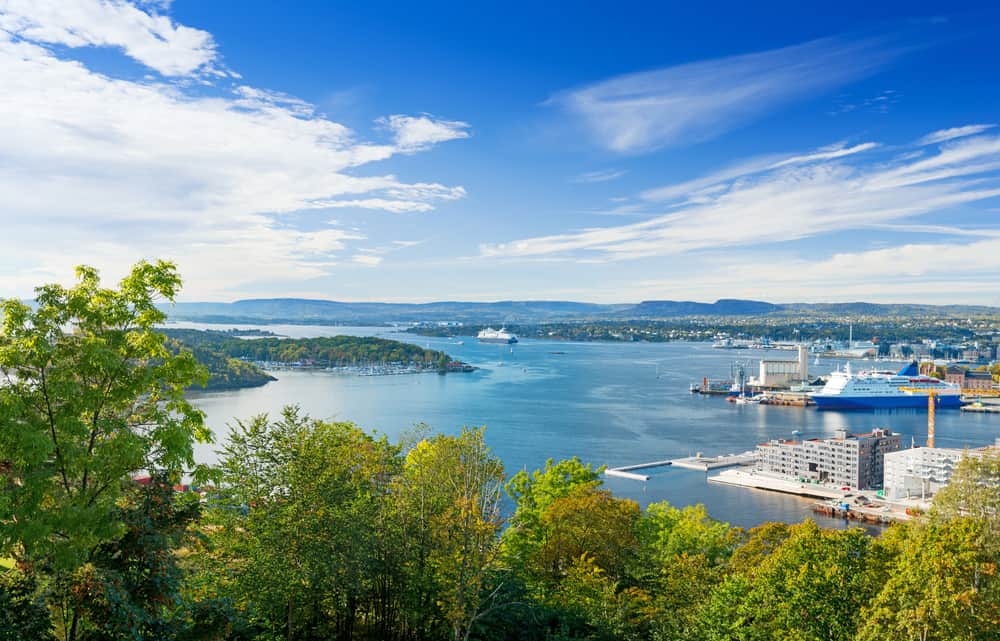
Go ski-ing
One of the unique attractions that Oslo offers can be found at Holmenkollen Ski Museum and Tower. While the Ski Museum and its café are closed until the end of 2023, you can still visit the ski jump tower, assuming, that is, you have a good head for heights. This is one of the top visitor attractions in Oslo.
Located on a large ski jumping hill called Holmenkollbakken, the 300-degree views from the top are arguably the best of the city, the surrounding woodland, and Oslofjord.
You can also see what it is like to ski jump at the Holmenkollen Ski-simulator. Using technology that professionals such as pilots and astronauts use to simulate real-life experiences, along with an ‘eye-view’ film, you can get a real insight into this and experience a realistic and truly hair-raising experience.
On the subject of skiing, you may also fancy visiting SNØ Ski Dome (‘snø’ meaning ‘snow’). Norway’s only indoor ski resort, this is open year-round and is suitable for everyone from beginners to experienced skiers. It’s only a short trip outside the city.
The best time to visit Oslo
Although southern Norway where Oslo is located has the warmest climate in the country, there is a noticeable difference in temperatures between summer and winter.
From November to March, temperatures hover under 4 or 5 degrees Celsius and often drop into minus figures. During the summer months in June, July and August, they can climb into the low to mid-20s.
Regardless of when you come, however, you’ll find no shortage of things to see and do.
Oslo is a great place for those who love the outdoors (both summer and winter activities), yet it also caters to travellers looking for some culture and entertainment. When you choose to come may depend on what specific activities you want to do as they may be available for only part of the year.
For those looking to participate in winter activities, it’s very easy to pursue the following during the coldest time of the year: alpine skiing and snowboarding; cross country skiing; tobogganing; and ice skating. Even then, you’ve still got the option of visiting Oslo’s fantastic museums, diving into the local food scene, and indulging in some shopping.
If you want to get out on the water, however, summer is the best time to come.
This is the best time of year for boat trips and exploring the nearby islands. The temperature will be much more comfortable than in winter too, so it’s an ideal time to visit to do walking tours, whether that is around the city and/or in the surrounding woods.
Calendar highlights
You may also want to plan your visit to Oslo with an event. That could be a concert, theatre production or an exhibition.
It could also be part of a bigger tour to visit other parts of the country and perhaps see the Northern Lights or take a cruise on the northern fjords.
There are several important dates in the annual calendar, but one of the most significant ones is 17 May, when Norway celebrates its national day. If you like street parades, this is a good time to come and watch locals dress up in traditional costumes and celebrate the signing of the country’s constitution in 1814.
Oslo hosts several festivals throughout the year representing pretty much all genres of music as well as dance, film and literature.
Thanks to Henrik Ibsen, the city has a thriving theatre scene, and the Opera House means you’ll never be short of first-class ballet and opera throughout the year.
The Visit Oslo website lists a useful ‘What’s on’ events page that is regularly updated so you can see what there is to do throughout the year.
Oslo can be a particularly special place during the Christmas period, and you’ll find lots of seasonal gifts and treats available to buy at the festive markets dotted around the city.
If you are looking for a walking tour with a difference, you can book a Christmas traditions and guided market tour.
Are 2 days in Oslo enough?
I definitely think two days in Oslo is a good period of time to get a feel and taste for this laidback and relaxing city.
Two days gives you enough time to see the main highlights and enjoy the varied attractions Oslo offers. Thanks to the city centre being fairly compact and the excellent public transport, it’s very easy to wander around the top sights quickly: many are within walking distance of each other.
As is often the case when you visit a city for two days, you’ll no doubt see things that you will want to come back and explore another time!
2 days in Oslo
If you found this post helpful in planning your 2 days in Oslo, you may be interested in others I have written about other European capitals. These include:

